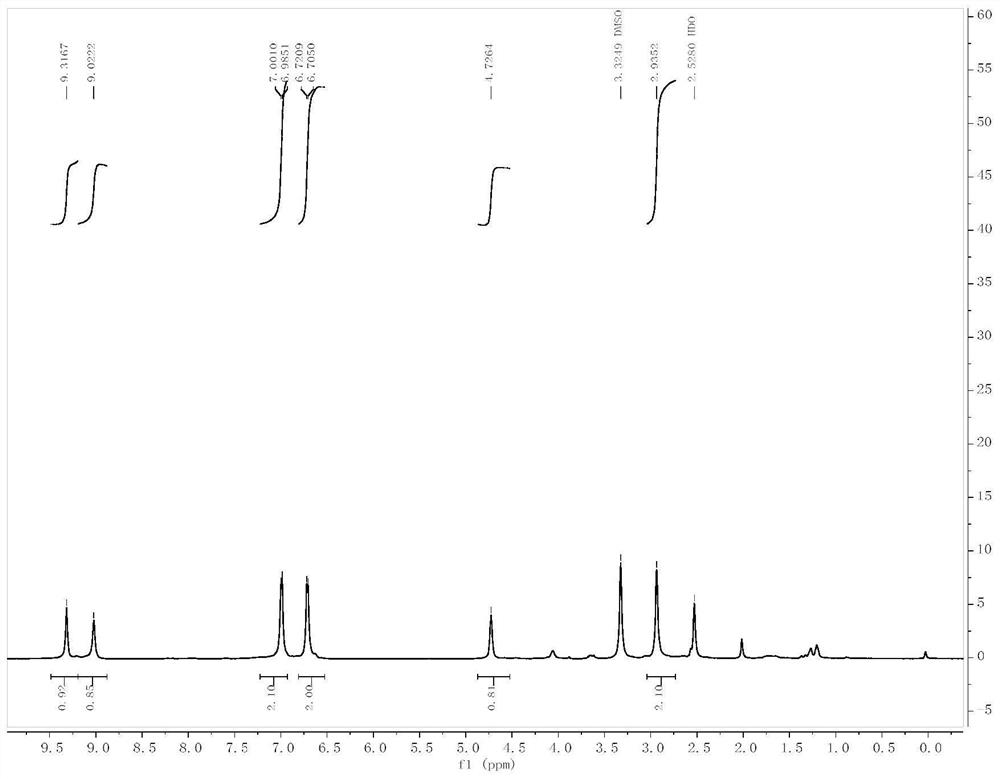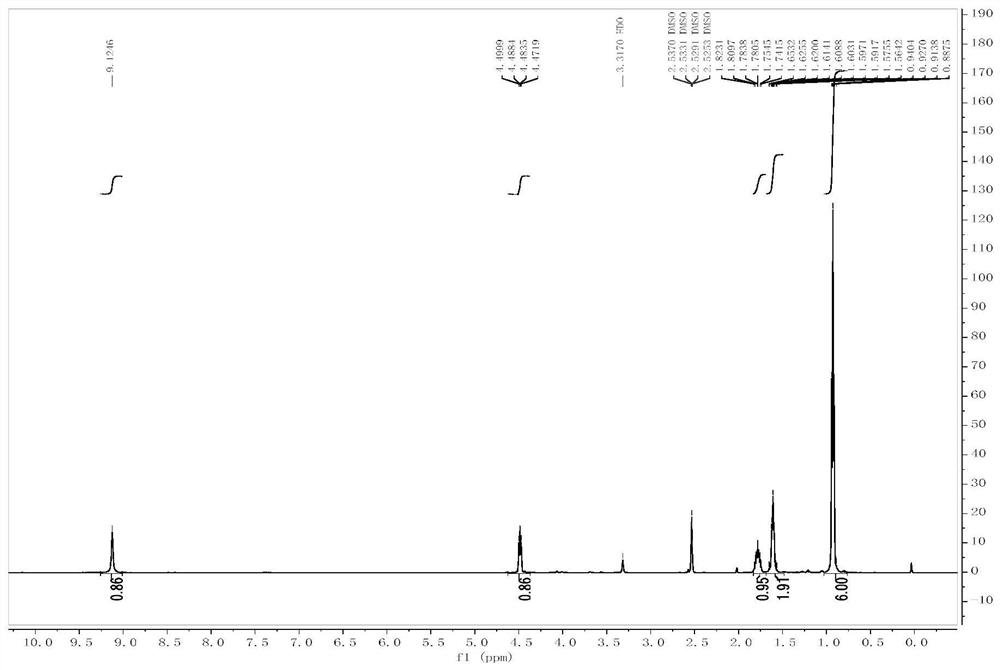A polyamino acid carrier with an acid-sensitive linking arm in the middle and its preparation method and application
A polyamino acid and linking arm technology, applied in the field of polyamino acid carriers, can solve the problems of easy destruction of the delivery protein, and achieve the effect of stable delivery effect and precise regulation.
- Summary
- Abstract
- Description
- Claims
- Application Information
AI Technical Summary
Problems solved by technology
Method used
Image
Examples
Embodiment 1
[0051] The preparation of polyamino acid carrier 1:
[0052] Step 1: 4-(4-Hydroxybenzyl)oxazolidine-2,5-dione (III-1)
[0053] L-tyrosine (II-1, 1 g, 5.52 mmol), triphosgene (3.28 g, 11.04 mmol) and 10 mL of anhydrous tetrahydrofuran were successively added to the 100 mL three-necked flask, and the reaction was heated under reflux for 12 h under nitrogen protection, TLC (petroleum ether) : ethyl acetate=1:1) monitoring the completion of the reaction of the raw materials. The reaction solution was cooled to room temperature, and the solvent was distilled off under reduced pressure to obtain a colorless oily substance. The crude product was purified by column chromatography (petroleum ether:ethyl acetate=4:1-1:1 gradient elution) to obtain 600 mg of white solid, yield: 52.5%. ESI-MS(m / z): 206.1[M-H] - . m.p.138-140°C. 1 H-NMR(300MHz,DMSO),δ(ppm):9.31(s,1H, OH ),9.02(s,1H, NH ),6.98-7.00(d,2H,J=4.5Hz, ArH ),6.70-6.72(d,2H,J=4.5Hz, ArH ),2.93(m,3H,Ar CH 2 CH ). 13...
Embodiment 2
[0069] Preparation of polyamino acid carrier chemically bonded protein preparation:
[0070] Step 1: Add 4 mg of RNase-A to 5 mL of PBS buffer, stir at room temperature for 10 min, and then add 0.1 mg of an inorganic weak base salt (the weak base salt can be: sodium bicarbonate (NaHCO) 3 )) continue to stir for 20min.
[0071] Step 2: 10mg of polyamino acid polymer carrier I was added to 10mL of organic solvent (the organic solvent can be methanol, ethanol, acetonitrile, tetrahydrofuran, acetone or any mixed solvent of the two), ultrasonicated for 10min to be completely dissolved and then stirred at room temperature.
[0072] Step 3: Put 0.1 mg I 2 Dissolve in 1mL organic solvent (organic solvent can be methanol, ethanol, acetonitrile, tetrahydrofuran, acetone or any mixed solvent of the two), and store in the dark
[0073] Step 4: Slowly drop the mixed solution obtained in step 1 into the mixed solvent of step 2, and control the dropping rate to be 2 drops per second. Afte...
Embodiment 3
[0077] Agarose gel electrophoresis of RNase-A
[0078] RNA agarose electrophoresis was used to assess GSH-triggered protein release and recovery of protein viability. 20 μg / mL of RNA and I@RNase-A (40 μg / mL of RNase-A) were incubated with different concentrations of GSH (0, 5 μM, 50 μM, 500 μM and 5 mM) at 37 °C. Then, the mixture was analyzed by 8% agarose gel electrophoresis at a constant voltage of 120 V for 20 minutes. Electropherogram such as Figure 20 As shown, GSH-triggered protein release and recovery can be seen well.
PUM
 Login to View More
Login to View More Abstract
Description
Claims
Application Information
 Login to View More
Login to View More - R&D
- Intellectual Property
- Life Sciences
- Materials
- Tech Scout
- Unparalleled Data Quality
- Higher Quality Content
- 60% Fewer Hallucinations
Browse by: Latest US Patents, China's latest patents, Technical Efficacy Thesaurus, Application Domain, Technology Topic, Popular Technical Reports.
© 2025 PatSnap. All rights reserved.Legal|Privacy policy|Modern Slavery Act Transparency Statement|Sitemap|About US| Contact US: help@patsnap.com



